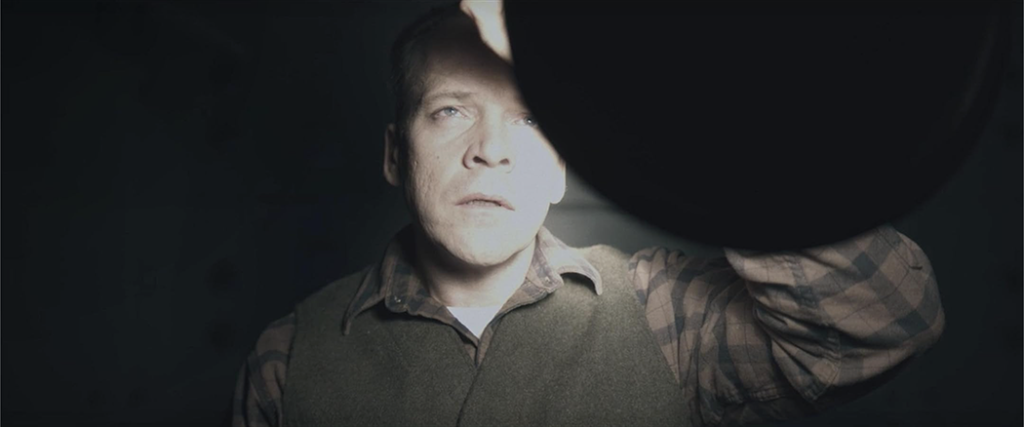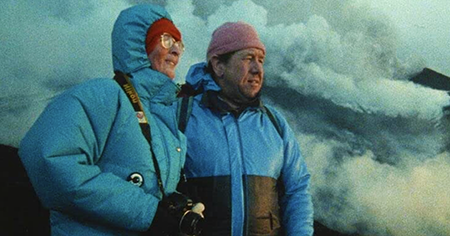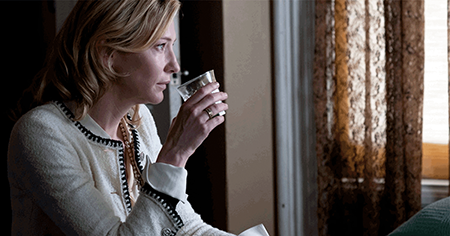
review | Wormwood
Half the content in Errol Morris’s Netflix documentary series on a CIA coverup is must-see viewing—the other half is just an ill-conceived waste of time
by Michael Gaughn
November 6, 2023
If you’re as annoyed as I am by all those overproduced, content-thin pseudo documentaries full of cutesy animation and labored dramatic reenactments that have come to flood Netflix, blame Errol Morris. His 1988 The Thin Blue Line shook up the moribund documentary genre and took it in a radical new direction by introducing images and conventions—including a sometimes cheeky, sometimes brooding tone—straight out of narrative cinema. He can’t really be held responsible for what far less talented, for more ingratiating filmmakers have done with the form he created. But he can be held responsible for offering up an unintentional self-parody in his effort to try to fit into the Netflix mold.
Half of 2017’s Wormwood—the stuff that directly revolves around Eric Olson and his efforts to find out the real story of why his father fell to his death out of a hotel window while in the care of the CIA—is unsettling and riveting. It offers another badly needed glimpse into that organization’s notorious MK Ultra program, shows the failure of the investigative press to pierce the subsequent decades-long coverup, and tells the wrenching story of Olson, who threw away a potentially brilliant career in psychology to get to the bottom of his father’s death. All of that is well worth watching.
The other half—speculative reenactments of the events leading up to and a way from the supposed suicide, with Peter Sarsgaard anemically portraying Olson’s father—is well intended, thinks it’s being groundbreaking, but is nothing but inept, tepid filler. And although Morris has been threatening to do something like this for years, I suspect these segments are only there to the oppressive degree they are because they’re the kind of thing Netflix feels makes documentaries palatable for its audience. But they’re really just a cringe-inducing waste of time that puffs the series up to six episodes when it would have been far more engaging and powerful at three.
So I’ve got a very odd recommendation to make: Definitely watch this series—it’s well worth it. But know that you’ll want to re-edit it in your head as you go along, blotting out all the threadbare theatrics, instead homing in on just the Eric Olson material—unless of course you actually like dramatic reenactments. In which case I have to ask, what the hell’s the matter with you?
I don’t think I can stress this enough: Wormwood is almost schizophrenic, but in a somewhat trivial way. The Eric Olson stuff is brilliantly done, the material is consistently absorbing, and it plays out with all the teases and reveals of a good mystery story. The other half is like having a son in film school and having to sit through the end-of-term screening of everyone’s final projects—except done here with a redundancy and tonal monotony that can make you feel like you’re trying to catch your breath in a vacuum.
That carries over into both the visuals and sound as well. Translating Olson’s therapeutic photo-collage technique into the supporting graphics works well for the most part. (Although it gets a little flip when it commingles images of actual people with shots of the actors portraying them, and Morris goes back to his “spiking the Cointreau” animation about five times too often.) The Olson’s home movies are well deployed to both convey the family in its time and to underscore key emotional points. The score for these segments—yet another dollop of poor man’s Glass—doesn’t really enhance anything but doesn’t do much to distract you, either. And while the video is dim and almost monochromatic, and the framing too clever by half, it doesn’t really impede Olson, Seymour Hersh, the Olson family’s attorneys, and others from presenting their material.
The reenactments, though, feature that relentlessly murky “did somebody forget to pay the electric bill?” look that’s served as a substitute for truly expressive cinematography for more than a decade now. What does this predilection for wallowing in a world where the sun never shines say about our collective psyche? This so-called aesthetic in no way makes the action more interesting—just harder to see. (And here, it even manages to stump Netflix’ usually stellar encoding, with obvious banding in a shot outside a hotel room door in Episode 3 and in the police interrogation scene and the interview with former Assistant DA Stephen Saracco in Episode 4, among other places.)
The score, which behaves itself for the most part during the Eric Olson-related segments, becomes just silly and grating during the reenactments—that monotonous noodling over dark, ominous tones, big on atmosphere but thin on emotion, that we now accept as the contemporary equivalent of the wall-to-wall scoring that helped sink hundreds of mediocre Studio Era productions. If you’re looking for nice, deep, gut-churning bass, the score serves up heaping helpings whenever it’s trying to cover up for the inept staging and convince you something exciting (or at least interesting) is about to happen.
I realize I’m circling back, but it’s a point worth emphasizing: The arc of Eric Olson’s story is documentary manna so well presented that it allows you to tolerate all the dramatic contrivance elsewhere—and how many filmmakers could manage to rise above their own misjudgment like that? But the reenactments seem to be nothing but an exercise in perversity. You can’t really say they summon up enough energy to qualify as sound and fury but they do manage to signify next to nothing. And Morris just can’t stop chewing on the hotel-room scene, showing it play out over and over again with minor variations when it carried whatever impact it was going to have (which wasn’t much) the first time around.
Anyone attuned knows that Errol Morris has had an odd career, and that he’s deliberately cultivated that oddness as a way to keep himself in the limelight. But something that went well beyond his usual quirkiness happened in the wake of his Oscar-winning The Fog of War, which is undeniably a sui generis masterwork. Like with Truman Capote and In Cold Blood, Morris seemed to have lost something essential by digging so deeply into a character as complex and bedeviling as Robert McNamara. He continued to do films on provocative figures—Donald Rumsfeld, Abu Graib, Steve Bannon—but lost the ability to rise to the challenge of his subjects, producing work that didn’t so much leave you hungry for more as hungry for something—anything. The parts of Wormwood that work work because Morris was almost perfectly attuned to the material and because he obviously identified with and bonded with Olson, providing an emotional undercurrent that’s been missing since he bonded with the uniquely corrupt father figure McNamara. As for the reenactments, the only pertinent question is: What was he thinking?
Michael Gaughn—The Absolute Sound, The Perfect Vision, Wideband, Stereo Review, Sound & Vision, The Rayva Roundtable, marketing, product design, some theater designs, a couple TV shows, some commercials, and now this.
PICTURE | The consistently murky cinematography manages to trip up Netflix’ codec in a few places, with some obvious banding in evidence
SOUND | Intelligible dialogue during the interview segments—a lot of mumbling during the reenactments. The bass goes deep with impact during the dramatic scenes.
© 2025 Cineluxe LLC





